Now that their former stigma as strictly hobbyists’ plants has been exploded by proselytizers like Thomas Hobbs and Debra Lee Baldwin, the moment for succulents is undeniably now. If tulips and bulbs are the lipsticks of the garden, succulents are the jewelry. Kitschy containers, modernist minimalism, lush landscapes, succulents can do it all. And though I don’t know from personal experience, I presume some must be fairly easy to winter over in frosty climates, at least size-wise.
It’s way too easy to become a devotee of these drought-adaptive plants. Easy to become smitten with echeverias.
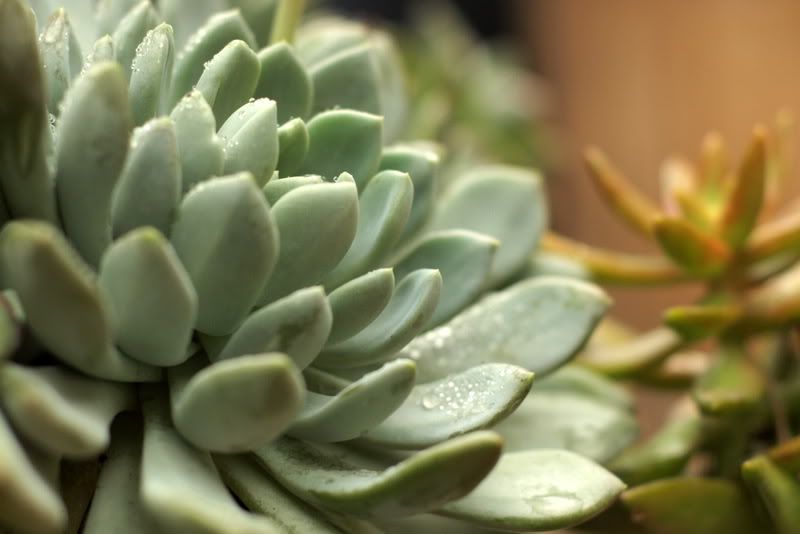

And then there’s the endless iterations of graptoverias, graptosedums, graptopetalums.
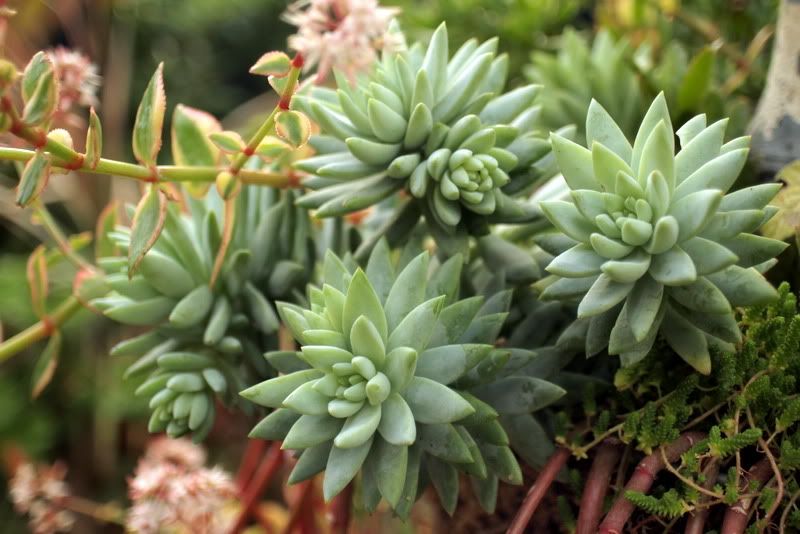
Personally, I’ve been a little unhinged by crassulas lately. And let’s not even get started on aeoniums. I think eye level is a great vantage point to fully appreciate the many complex colorings and shapes, and apparently so do a lot of other people, judging by the continuing momentum of living walls. Another benefit of keeping succulents airborne is the distance it imposes between these plants and their earth-bound enemies, snails and slugs. (They’re not called succulent for nothing.) My little experiments have to do with what matrix will hold them aloft and contain the soil, with gravity continually trying to assert its rights. Obviously, far greater minds than mine are figuring this out with scientific precision for green walls that do the important work of carbon sequestration, water runoff absorption, and cooling of buildings, but I’m talking using stuff lying around at home for small-scale experiments.
Coir, coconut fiber used as hanging basket liners, was an early experiment that still holds together but is really difficult to wet.
These plants are tough and can tolerate a lax watering regimen, but they do need watering to stay plump, and the coir just seems to wick water away from the roots. I’ve been tempted many times to dismantle this one, but the growth has become extremely tight. When knocked to the ground by high winds recently, it bounced like a beach ball. The dripping beads are Senecio rowleyanus.
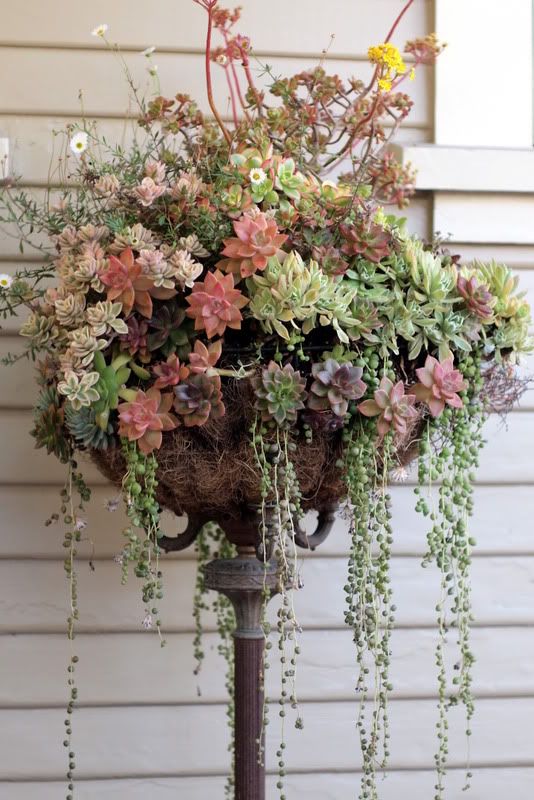
Hollow concrete chimney flues unearthed from the fireplace, planted back in January with Sedum rupestre ‘Angelina,’ recyclable shopping bags used to hold the soil. Holding up surprisingly well with just an occasional absented-minded spritz of the hose.
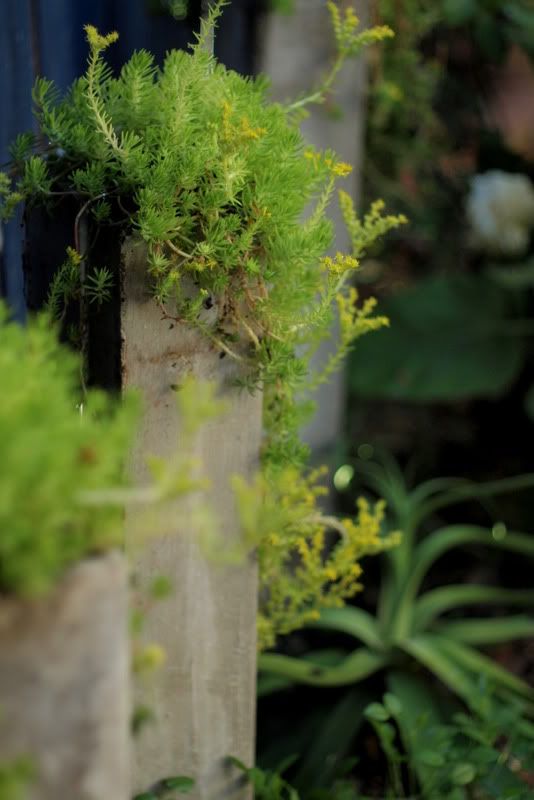
I think these are car jack stands. I found them stacked in the garage. I’m sure nobody will miss them.
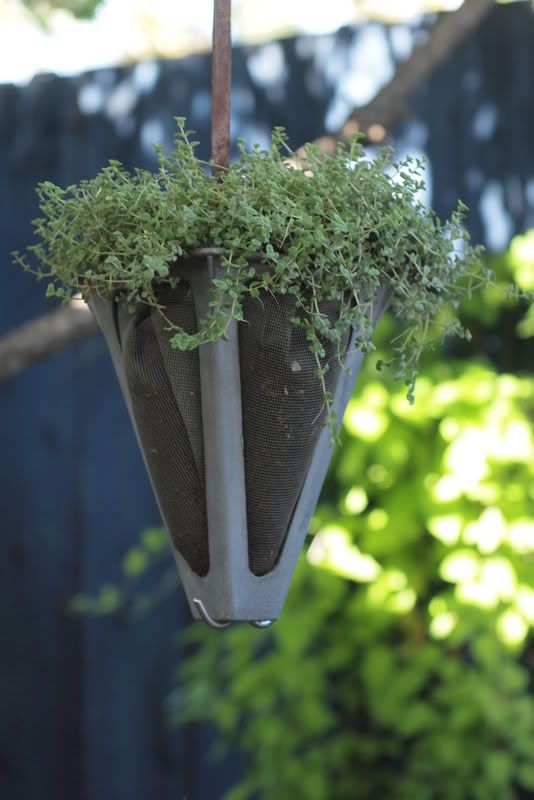
The succulent above, which has a thyme or sedum-like quailty, was labeled Crassula expansa, but don’t quote me. Online searches don’t corroborate this name.
I used old window screens to hold the soil for this one. So far it’s been easy to keep moist.
I love taking succulents to the next level. Eye level.
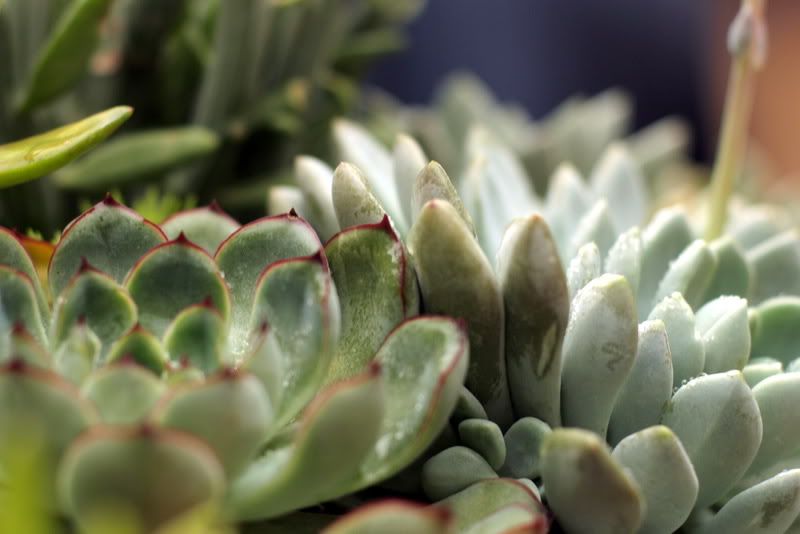

First time visiting your blog,
Your arrangement with hanging Senecio Rowleyanus is stunning! Sun or shade?
The heck with green walls; the funeral wreath holder, and an old floor lamp (?) are way better.
Karen, glad you stopped by! I’ve moved this one into mostly shade since it’s so hard to keep moist. Otherwise, it’d be in morning sun, afternoon shade.
Kathy, and the lamp was a curbside find! (I was thinking of you when writing of those smitten by echeverias.)
I love to have succulent in my face… Merci, Denise.
I have become smitten with succulents as well, but most of what we grow here has to relegated to pot culture. We are warm enough for many of the more cold hardy choices, but drainage and rainfall, particularly in the winter can be an issue. BTW, thanks for sharing the Venice garden tour.
Delphine, don’t we all!
Les, you’re most welcome.
i absolutely love your photos! that second shot, with all the different shades of blue, teal, cobalt, omg!! succulents are stars with staying power!
You do them beautifully. That Senecio-dripping chalice is magnificent.
Hi, Denise — Applause for your writing, photography and passion for all plants plump! And many thanks for mentioning me in the same sentence as Jewel Box Garden author Thomas Hobbs. ;+)
I LOVE your Succulents in Your Face!!! I’d love to know what all is in this so I can do something like it; it’s absolutely georgeous!!
Hi What would you use instead of the coir in the lamp stand planter?Thanks Beautiful
Rachel, even though the coir is hard to re-wet if allowed to get too dry, on the plus side it’s really tough. The whole shebang has been knocked off the lamp stand twice and patched back together. I still haven’t gotten around to fastening it onto the lamp! So all in all, I’d probably use coir again.
Denise, your lamp stand is gorgeous! Do you have a list of the varieties included there besides the Senecio rowleyanus? I would love to TRY to replicate this.
Hi there, could i please know where you found the pedestal with the basket, that you have planted up. Kim a florist and have a bride desperate for some similar to theses for hard wedding day
Rebecca, the pedestal is a repurposed lamp stand I found on the curb, and the basket is the typical kind we can buy in the U.S. in a craft store or nursery for mossing up for hanging plants.